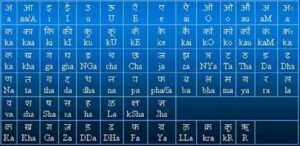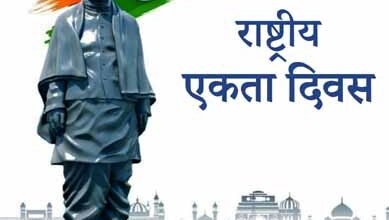
यूनिकोड किसे कहते हैं?
यूनिकोड एक मानक है जिसका उपयोग विभिन्न भाषाओं और लेखन प्रणालियों के अक्षरों, संख्याओं, प्रतीकों, और विशेष अक्षरों को डिजिटली प्रतिनिधित्व करने के लिए किया जाता है. यह कंप्यूटर और अन्य डिवाइसों में टेक्स्ट को एक समान और सार्वभौमिक तरीके से प्रदर्शित करने की अनुमति देता है, जिससे विभिन्न भाषाओं और लिपियों के बीच डेटा आदान-प्रदान में सुसंगत बनी रहती है.
यूनिकोड का मुख्य उद्देश्य सभी भाषाओं और लेखन प्रणालियों के अक्षरों और प्रतीकों का एक एकीकृत और मानकीकृत सेट प्रदान करना है. इससे विभिन्न भाषाओं के टेक्स्ट को एक ही प्लेटफॉर्म पर आसानी से दर्शाया जा सकता है, चाहे वह वेब पेज हो, दस्तावेज़ हो या फिर सॉफ़्टवेयर एप्लिकेशन हो.
यूनिकोड हर अक्षर, संख्या, और प्रतीक को एक अद्वितीय कोड पॉइंट (Unicode Code Point) प्रदान करता है. ये कोड पॉइंट्स हेक्साडेसिमल फॉर्मेट में दर्शाए जाते हैं, जैसे कि U+0041 (A के लिए), U+0939 (ह के लिए). यूनिकोड में लाखों कोड पॉइंट्स हैं, जो विश्व की लगभग सभी लिखित भाषाओं के अक्षरों और प्रतीकों को कवर करते हैं. इसमें लैटिन, देवनागरी, अरबी, चीनी, जापानी, कोरियाई, और अन्य कई लिपियाँ शामिल हैं.
यूनिकोड कंसोर्टियम (Unicode Consortium) द्वारा विकसित और बनाए रखा जाता है. यह एक गैर-लाभकारी संगठन है जो समय-समय पर यूनिकोड के नए संस्करण जारी करता है, जिसमें नई लिपियाँ, नए अक्षर, और प्रतीक जोड़े जाते हैं. यूनिकोड के विभिन्न ट्रांसफॉर्मेशन फॉर्मेट्स हैं, जैसे कि UTF-8, UTF-16, और UTF-32. ये फॉर्मेट्स टेक्स्ट को विभिन्न प्रकार की एनकोडिंग में कन्वर्ट करने की अनुमति देते हैं.
UTF-8: – यह सबसे सामान्य रूप से उपयोग किया जाने वाला फॉर्मेट है और ASCII के साथ पूर्णत: सुसंगत है.
UTF-16: – इसका उपयोग उन मामलों में किया जाता है जहाँ बड़ी संख्या में यूनिकोड कोड पॉइंट्स की आवश्यकता होती है.
UTF-32: – यह हर यूनिकोड कोड पॉइंट के लिए एक फिक्स्ड साइज (32 बिट्स) का उपयोग करता है.
यूनिकोड का उपयोग वेबसाइटों, मोबाइल एप्लिकेशन, सॉफ़्टवेयर प्रोग्राम, और डेटाबेस में किया जाता है. यह विभिन्न भाषाओं में टेक्स्ट को सटीक और समान रूप से प्रदर्शित करने में मदद करता है. यूनिकोड ने अंतरराष्ट्रीय टेक्स्ट और डेटा प्रोसेसिंग में क्रांतिकारी परिवर्तन लाया है, जिससे वैश्विक संचार और सूचना आदान-प्रदान में सरलता और सुसंगत आई है.
========== ========= ===========
What is Unicode?

Unicode is a standard used to digitally represent letters, numbers, symbols, and special characters of different languages and writing systems. It allows text to be displayed in a uniform and universal way on computers and other devices, thereby maintaining consistency in data exchange between different languages and scripts.
The main purpose of Unicode is to provide a unified and standardized set of letters and symbols of all languages and writing systems. This allows texts of different languages to be easily displayed on the same platform, be it a web page, document or software application. Unicode assigns a unique code point to every letter, number, and symbol. These code points are represented in hexadecimal format, such as U+0041 (for A), and U+0939 (for H).
Unicode has millions of code points, covering letters and symbols of almost all written languages of the world. It includes Latin, Devanagari, Arabic, Chinese, Japanese, Korean, and many other scripts. It is developed and maintained by the Unicode Consortium. It is a non-profit organization that periodically releases new versions of Unicode, adding new scripts, new characters, and symbols. Unicode has various transformation formats, such as UTF-8, UTF-16, and UTF-32. These formats allow converting text into different types of encodings.
UTF-8: – It is the most commonly used format and is fully compatible with ASCII.
UTF-16: – It is used in cases where a large number of Unicode code points are required.
UTF-32: – It uses a fixed size (32 bits) for each Unicode code point.
Unicode is used in websites, mobile applications, software programs, and databases. It helps to display text accurately and uniformly in different languages. Unicode has revolutionized international text and data processing, bringing simplicity and consistency to global communications and information exchange.





